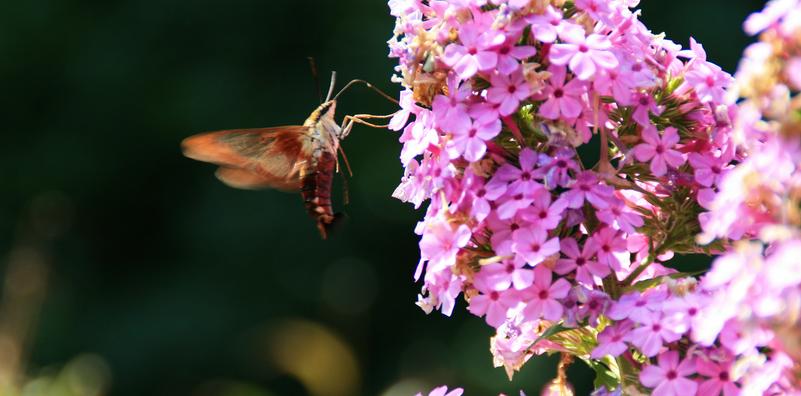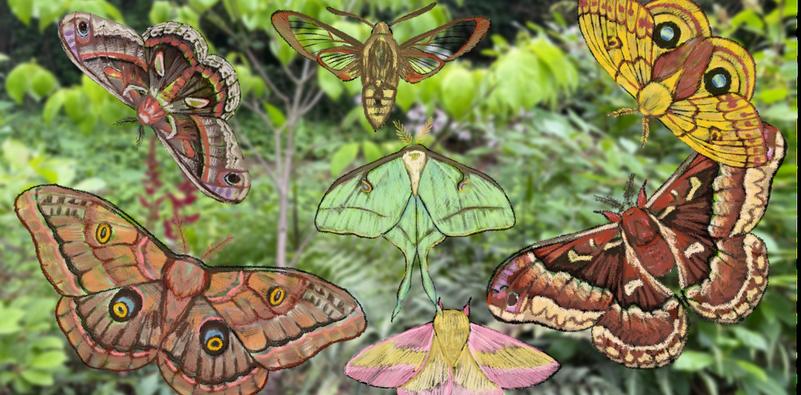The Many Moths of the Mid-Atlantic
It’s been quite a week for pollinators: right on the back of National Urban Beekeeping Day (July 19th) and Connecticut ASLA’s conference, Bees in the Built Environment, the weeklong celebration of our varied native moth species begins. National Moth Week, held from July 19th to July 27th, is intended to bring awareness to the less popular Lepidopterans by educating both industry professionals as well as the general public about the importance of planting suitable larval hosts and nectar resources for moths of all genera.
While some of our native moths, such as our giant silk moths, do not eat during their adult stage, their caterpillars require specific native plants to ensure reproductive and developmental success. We often find the adult silk moths either in the process of attempting to lay eggs or actively dying, having committed to their duties of finding a mate and conceiving the next generation of prodigal moths. The large, overt, false eyespots on their wings make our giant silk moths easy to identify and signal to potential predators that they are unpalatable (and potentially toxic). Sadly, silk moth populations in the Mid-Atlantic and Northeast have decreased due to the threat of human intervention, from pesticide misuse to overdevelopment of natural areas, making it difficult for these large, fluffy beauties to prosper in resource-limited environments.
The incorporation of thoughtful plant selections into our natural and manicured landscapes can help to support our endemic silk moths. Caterpillars often rely on native shrubs and trees for both protection and sustenance, with the adults specifically seeking out certain woody species for egg laying and offering the best chance of survival for their brood.
We often find the adults flitting about from May to late July, actively hunting for a suitable birthing ground, resulting in the overwintering larval stage from August into the following spring, making now the ideal time to be a hungry silk moth baby.
Another fluffy favorite, the clearwing moths, resemble tiny flying lobsters and mingle about searching for nectar on brightly blooming perennials with tubular flowers for their long proboscises. Both snowberry and hummingbird clearwing moths are some of the most charming visitors of Phlox paniculata ‘Jeana’ (seen above), and very much mimic the flight patterns and hovering abilities of actual hummingbirds while they forage.
Attracting clearwing moths and being able to admire them during daylight hours is a bit simpler than being graced with the opportunistic presence of a giant silk moth, who tend to be found nearby open woodlands and forest edges where their larval plant hosts happen to be more plentiful.
Designing a garden or landscape for moths requires thoughtful and intentional plant selections, and typically requires the inclusion of native shrubs and trees. Because our native adult silk moths lack mouthparts and do not require nectar, planting a perennial garden full of sweet-smelling, brightly colored wildflowers does not benefit them the same way it would a fluffy clearwing moth. Interestingly, clearwing moth larvae overwinter in leaf litter left behind, making them just as reliant on trees and deciduous shrubs as their large silky cousins.
Even on the end of Moth Week, the importance of planting for their success year round is critical.
We’ve compiled a list of some of our favorite moth species and their preferred nectar sources or larval hosts for helpful planning.

Hummingbird clearwing moth

